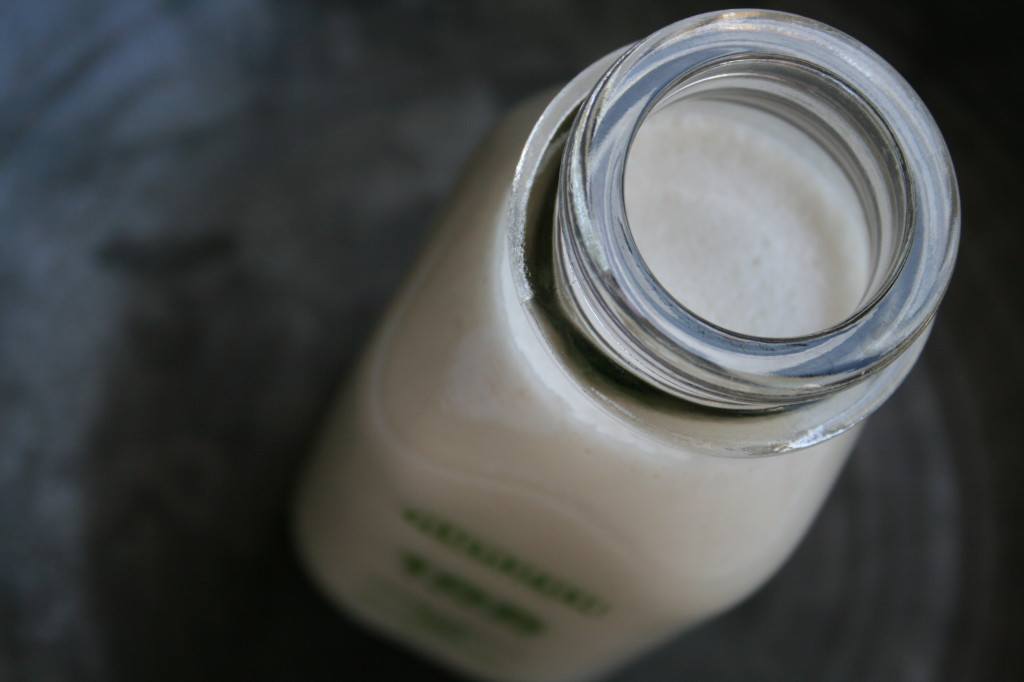Dairy alternatives and replacements are growing in popularity, due in part to the increasing interest in vegan and paleo diets, both of which eschew standard milk products and to people discovering previously unknown allergies and intolerances. While I do regularly consume good quality cheese and Greek yogurt, almond milk is my go to choice over regular milk. I like that I can make it easily at home and have full control over all the ingredients. Unfortunately, cow’s milk can be difficult to digest for most people, usually because they do not have the enzymes necessary to break down the sugars called lactose or because they are allergic to a protein it contains, called casein. Both the lactose and casein can be inflammatory and cause the body to build up mucous as a way to protect and detoxify itself- not a pleasant condition when substantial levels accumulate. On top of that, there can be added hormones and antibiotics in the milk, as well as stabilizers, all of which do not lend to a balanced and healthy body.
Although the hormones and antibiotics are left to the cow’s milk, most varieties of almond, coconut, rice, flax, etc. milks have added stabilizers and emulsifiers that can cause some discomfort in the digestive tract. Most of the brands I have seen contain sunflower or corn based emulsifiers that keep the milk very uniform. I have yet to come across a brand that does not use carageenan, it is an additive derived from seaweed that acts as a thickener and a binder. It is fairly new to the food supply but studies are starting to show that it may cause inflammation in intestines (this can happen when the body does not recognize something as food and treats it like an invading toxin), disrupting digestion and leading to bloating and discomfort. Generally, homemade versions will separate after being left in the fridge after awhile, but after a quick shake it is all mixed together again. Homemade versions without any additives will only last around 3 days, sometimes 4, whereas the commercial versions will last several weeks. When I do buy it already made I like the Almond Fresh brand the best, in the plain unsweetened flavor, because they have the best ingredient list in my opinion. For people who find discomfort with regular cow’s milk and then make the switch to almond milk, it can get a bit disheartening if that does not feel good either, as is the case with a family friend and the reason for this mini essay :). In those cases, I suggest trying a homemade version and if that doesn’t work then there might be an intolerance to almonds, in which case there are several different seeds and nuts to try. For people with nut allergies, seed based milks can be a good option.
The ratios for making this are not very important, and all you basically need are nuts or seeds and water. I like to throw in a few dates for sweetness and coconut oil, which acts as a natural thickener and emulsifier. The only downsides to the coconut oil are that it has a strong taste, not good for people who do not like the flavor, and that if you leave the milk in the fridge the oil will harden into little bits floating around. That does not matter if you put it in warm tea or coffee so it can melt, or in a smoothie, but it would not be great on its own. You can also add in vanilla extract, or go really crazy and add in some cocoa and sweetener (dates, raw honey or maple syrup are my recommendations) to make chocolate milk. One final note is that soaking the almonds beforehand can really help make them easier to digest, especially for those with sensitive tummies (side note- our stomachs are pretty high up near our diaphragms so when our bellies hurt that sensation is usually coming from our intestines). I find that if I eat a handful of almonds on an empty stomach it does not feel very good, but if they are soaked I can have a couple handfuls and not have any discomfort.
- 4 cups water
- 4 dates
- 1 cup almonds
- 1 tablespoon cold-pressed coconut oil
- Soak the almonds in a bowl with around 2 cups of water for 2-24 hours. If I am going to make it in the morning I will start soaking the night before and if I am going to make it in the evening I will start soaking in the morning. After soaking, drain the almonds and give them a good rinse. I find it easiest and fastest to use a colander for this. Place all the ingredients in a blender and blend until the almonds are broken down to sand sized pieces. Next up you will need to drain the liquid out and away from the almond pulp, this is easy if you have a nut milk bag. If not, place a sieve over a large bowl and line the sieve with two layers of cheesecloth (contraption pictured below). Pour the milk over the cheese cloth and when most of the liquid has seeped through, bring the edges of the cloth together and squeeze to any remaining liquid trickles out. You can save the pulp for granola, smoothies or baking and it will stay well in the freezer for a few weeks until ready to use it.


